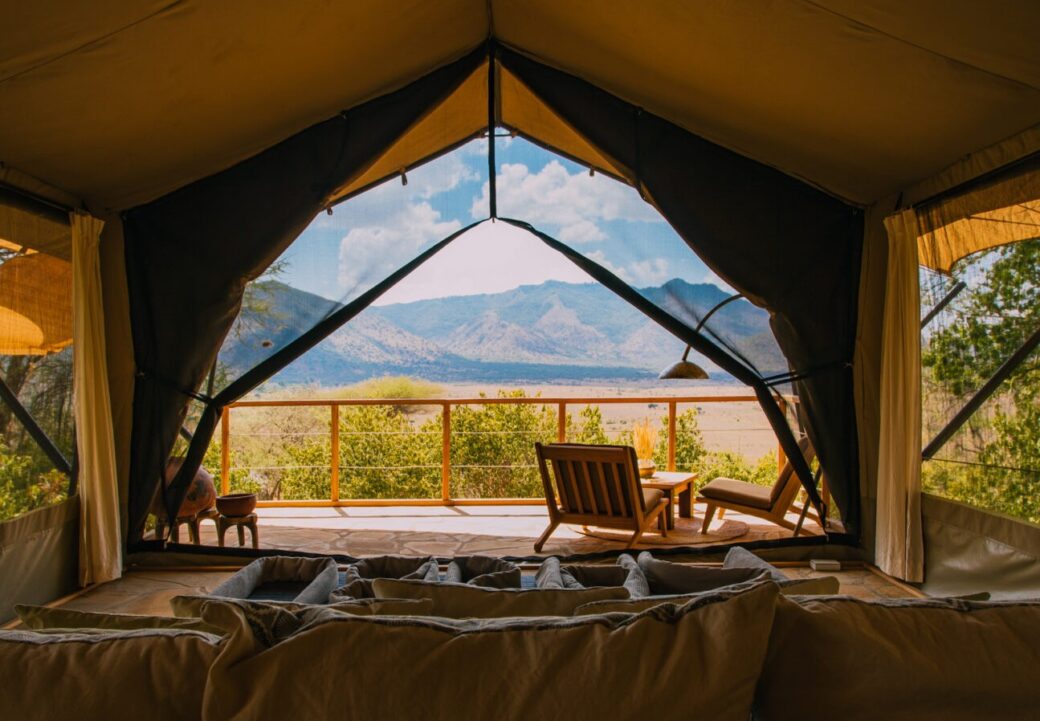A Secret Too Good to Keep: Mkomazi
View from the lodge

View from the lodge

An Unrecognized Paradise
In Tanzania, Mkomazi National is a paradise that rivals some of the best nature reserves in the world. It has a tremendous number of big African animals, gorgeous natural scenery, lovely lodgings, and it's easy to access. Yet it is so seldom visited that on any given day, you could have the entire park to yourself. It's that good. What's the secret? Probably, Mkomazi get's overlooked because it's near world-famous locals like The Serengeti and The Ngorongoro Crater. These are big brand destinations that have been around since early in the last century. In contrast Mkomazi is new. It only became a park in the mid-2000s. It's also hard to pronounce. Few names in any language begin with an "MK" consonant cluster. So let's get past that. The "M" is hummed like mmm that's good. It's pronounced mmm-ko-MA-zee.
I've explored Africa for decades, but it was only recently that I discovered Mkomazi National Park in Tanzania. I was immediately hooked. Mkomazi is the kind of undiscovered space that travelers dream about but rarely find—it's natural, wild, and truly beautiful. The park boasts an abundance of African wildlife, including the storied Big Five: lion, leopard, rhinoceros, elephant, and cape buffalo.
Mkomazi's location alongside Kenya's Tsavo West National Park creates one of the world's largest protected ecosystems. This vast natural landscape allows unimpeded movement for key species like elephants, African wild dogs, and black rhinos. This ecological connection with Tsavo's wildlands promotes biodiversity through genetic exchange and seasonal migrations, which are critical for the long-term viability of mammal populations.
What's particularly striking about Mkomazi is that, in this age of over-tourism, hardly anyone goes there. On my first four-day safari in Mkomazi, I saw only one other safari vehicle. Just one vehicle in a wild expanse of 1,240 square miles! On a typical day in Mkomazi, the only sounds are those of nature. Birds are everywhere, with 450 species, lions roar in the night, and an elephant's trumpet can carry for miles. You'll find giraffes, buffalo, cheetahs, eland, gerenuks, Grant's gazelles, hartebeests, impalas, kudus, leopards, lions, oryxes, rhinos, zebras, and many other wild and rare creatures.
A Special Attraction: The Black Rhinoceros
When it comes to wildlife enjoyment, Mkomazi has one very special attraction: the black rhinoceros. These creatures are so rare that most safari travelers never see one. However, one of Mkomazi's secrets is a rhino sanctuary deep within the park, in a remote and protected area, where finding a rhino is all but guaranteed. Unlike more densely visited parks, where crowd control can be an issue, Mkomazi is quiet, more relaxed, and less restrictive for visitors. You can walk around with rangers and even get close to large animals like giraffes and elephants. Night game drives offer another fascinating experience, allowing you to see nocturnal animals rarely observed during the day.
Accommodation and Accessibility
There are very few lodges in the area, but availability is rarely an issue. Mkomazi Wilderness Retreat is my favorite. It's a new tent-style camp with surprisingly posh amenities. From its hilltop position overlooking an active waterhole, you can relax on the wooden deck in front of your tent and watch elephants bathing below. It's also wild enough that you can arrange for your own private tented campsite and have it all to yourself.
In a world increasingly crowded, mechanized, digitalized, and loud, Mkomazi is the ideal place to retreat and reflect. It is a sanctuary not just for wildlife, but for people as well. Despite its "sleeping beauty" isolation, Mkomazi is surprisingly accessible. It's just a three-hour drive on a paved road from Kilimanjaro International Airport, where millions of tourists land on their way to more heavily traveled destinations. Given its ease of access and the wonders to be discovered, Mkomazi cannot remain a hidden gem much longer. Now is the time to experience it while it's still pristine and natural. Such places are getting harder to find.
When to Visit Mkomazi
The best time to visit depends on your preference:
The More Visits the Better
I hope you will visit Mkomazi soon. While it's tempting to keep this gem a secret, national parks, conservation areas, and other protected places cannot survive unless people visit them. Tourism generates money to protect these wildlands. It's tourism dollars supporting local jobs, community development, schools, clinics, good roads, and affordable electricity that will make wildlife viewing more valuable than wildlife poaching. So more visits will be good, but if you go there soon you can experience the very best of it.
–Wil Smith